Homepage / News Details
WHAT IS CALCIUM HYPOCHLORITE?
- Categroy:News
- Author:
- Origin:
- Release Time:2020-06-12 14:00
- Views:
【Summary】Calcium hypochlorite—or what most people just call “cal hypo”—is one of various types of chlorine you can buy, and it looks exactly how you’d expect pool chlorine to look. It’s mostly commonly sold as a white, chlorine-smelling powder/granules, which are then poured directly into the pool water, or sometimes via the pool skimmer. It has a highly alkaline pH level at around 11-12, and contains anywhere from 65-75% free available chlorine. These are typically sold in 1lb bags, but it’s worth considering a bulk-buy if you’re planning to use cal hypo regularly. It’s also less commonly found in tablet form. It looks like a white hockey puck in either 1″ or 3″ sizes, which is then dissolved and drip-fed in a specialized feeder. It has a slightly lower pH level of around 9. Regardless of physical form, neither the powder or tablet versions of calcium hypochlorite contain pool stabilizer (cyanuric acid) to protect against the sun, but instead contain calcium which raises your pools calcium hardness level over time.
WHAT IS CALCIUM HYPOCHLORITE?
【Summary】Calcium hypochlorite—or what most people just call “cal hypo”—is one of various types of chlorine you can buy, and it looks exactly how you’d expect pool chlorine to look.
It’s mostly commonly sold as a white, chlorine-smelling powder/granules, which are then poured directly into the pool water, or sometimes via the pool skimmer. It has a highly alkaline pH level at around 11-12, and contains anywhere from 65-75% free available chlorine.
These are typically sold in 1lb bags, but it’s worth considering a bulk-buy if you’re planning to use cal hypo regularly.
It’s also less commonly found in tablet form. It looks like a white hockey puck in either 1″ or 3″ sizes, which is then dissolved and drip-fed in a specialized feeder. It has a slightly lower pH level of around 9.
Regardless of physical form, neither the powder or tablet versions of calcium hypochlorite contain pool stabilizer (cyanuric acid) to protect against the sun, but instead contain calcium which raises your pools calcium hardness level over time.
- Categroy:News
- Author:
- Origin:
- Release Time:2020-06-12 14:00
- Views:
WHAT IS CALCIUM HYPOCHLORITE?
Calcium hypochlorite—or what most people just call “cal hypo”—is one of various types of chlorine you can buy, and it looks exactly how you’d expect pool chlorine to look.
It’s mostly commonly sold as a white, chlorine-smelling powder/granules, which are then poured directly into the pool water, or sometimes via the pool skimmer. It has a highly alkaline pH level at around 11-12, and contains anywhere from 65-75% free available chlorine.
These are typically sold in 1lb bags, but it’s worth considering a bulk-buy if you’re planning to use cal hypo regularly.
It’s also less commonly found in tablet form. It looks like a white hockey puck in either 1″ or 3″ sizes, which is then dissolved and drip-fed in a specialized feeder. It has a slightly lower pH level of around 9.
Regardless of physical form, neither the powder or tablet versions of calcium hypochlorite contain pool stabilizer (cyanuric acid) to protect against the sun, but instead contain calcium which raises your pools calcium hardness level over time.
Cal-Hypo Quick Stats
- Comes in powder (most common) or tablet form
- Powder form has a pH level around 11-12
- Tablet form has a pH level of around 9
- Contains around 65-75% chlorine
- Does not contain pool stabilizer
- Contains calcium that will raise calcium hardness
Releate News

Time of issue : 2024-05-08 13:15:35

Time of issue : 2024-04-29 13:33:08

Time of issue : 2024-04-22 08:56:03
CONTACT US
PRODUCTS
CALCIUM HYPOCHLORITE
TCCA
SDIC
BCDMH
FEEDBACK
© 1999-2018 北京网站建设有限公司 Copyright © 2012-2022 All Rights Reserved Powered by www.300.cn 冀ICP备12012949号 津公网安备 12010302002173号 Seo tag

